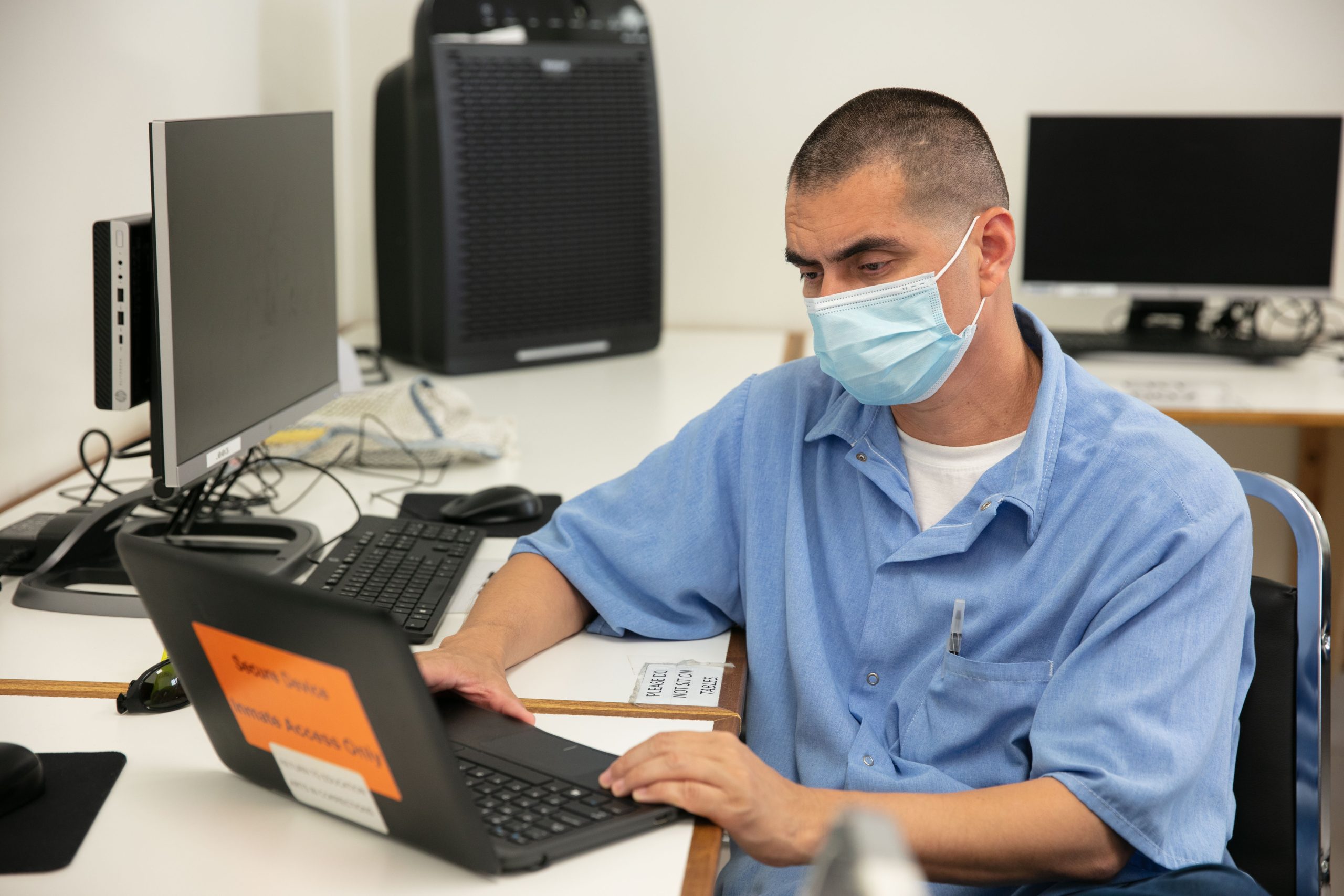Inside CDCR caught up with Sylvia Dumalig of Enterprise Information Services (EIS) and Lynne Ruvalcaba of the Office of Correctional Education (OCE) to discuss their roles in the massive project to roll out thousands of secure laptops to incarcerated students statewide.
What are your roles in the laptops project?
Ruvalcaba: I am the Administrator of Educational Technology for the Office of Correctional Education. It is my responsibility to oversee the deployment of the devices, site-specific staff training and development, student training, and to act as the liaison between the sites and OCE for any laptop-related issues. I work in collaboration with EIS to resolve issues and with the Learning Management System (LMS) team to create and launch the Canvas LMS courses for students.
Dumalig: I am the IT Project Manager overseeing the implementation of the “Technology for Incarcerated Persons Participating in Academic Programs” effort. This provides me the opportunity to engage my two passions of technology and support rehabilitation and education in CDCR to better prepare our CDCR incarcerated citizens for life after their release and provide them better opportunities to succeed.
Why is the initiative important?
R: This initiative is important because it allows our students to access educational materials, support, and services when they are not in the physical presence of teachers. It supplements instruction and extends learning for all students, and provides them with the skills and abilities that will be expected of them when they return to their lives after prison. The initiative provides students with tools to complete their work, research information, and truly engage with subject matter material in a meaningful way.
What kind of effort was involved in getting it done?
D: Work started on this effort years ago. Leadership within both EIS and DRP envisioned this day when the incarcerated would be able to access their content from any device: laptop, desktop, tablet, as well as continue their learning when they transfer to different institutions similar to a student taking classes outside of prison. This eliminates the limitations of time in a classroom and face to face time with a teacher for our CDCR students, so they can work on assignments, and study, resulting in more time spent on class activities. Removing the barriers of location and access to education materials opens up a lot of possibilities for the future of CDCR educational and rehabilitative programs.
R: The work was a tremendous partnership between EIS and OCE. EIS identified the devices, procured, and prepared them for distribution to our students as well as ensuring access at the individual institutions. OCE was responsible for selecting the Learning Management System, preparing it for use in a restricted environment, and training scores of teachers and students to use the devices. In many cases, our students had never had access to their own computers and a significant amount of training was necessary not only to teach them to use the online LMS but also to use the device itself. The effort involved – and continues to involve – visits to each institution to deploy, train, and troubleshoot as the computers are delivered and made available to students.
What does this project personally mean to you?
R: To me, this project means we are able to engage learners and make information more meaningful than ever before. We can bring knowledge to a wide array of individuals who may never have had the opportunities presented by the instructors and reinforced through material on these devices. Providing laptops to our students demonstrates our commitment to their development and achievement as well as their rehabilitation. Having seen some of the pictures of students accessing devices, I have personally seen the shifts in mental mindsets of students who never thought this would come to pass. They use the devices with enthusiasm and have demonstrated aptitude and curiosity beyond a level I had even imagined. I saw students who were able to envision themselves as successful graduates and who stood a little taller and prouder as they carried their devices, knowing that they were “real” students. To me, this inspiration and the ability to make a person feel his or her worth is the most important element of this project.
D: This project is so special to me – it brings together my passion for technology as a whole and my passion to safely and securely expand technological resources to students. By giving them the experience of using technology while in our care, we give them the confidence to know they can take that skill and the education they obtain with them when they go home. I firmly believe more access to technology and education will result in fewer of our incarcerated persons returning to CDCR and gives them a much increased chance to succeed post release.
Read more rehabilitation stories.
Follow CDCR on YouTube, Facebook, X (formerly Twitter). Listen to the CDCR Unlocked podcast.
